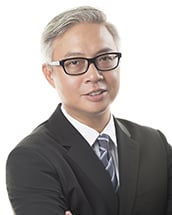In brief
The Ministry of Health issued Circular 26/2020/TT-BYT (“Circular 26“) dated 28 December 2020 to amend and supplement Circular 22/2013/TT-BYT dated 9 August 2013 (“Circular 22“) regarding continuous medical education (CME) for medical officials.
Circular 26 came into effect on 1 March 2021.
Key takeaways
- Certain subjects will no longer have to comply with Circular 22.
- CME facilities1 will develop, appraise, and issue CME programs and materials, subject to specific requirements and procedures.
- Circular 26 revokes Articles 10 and 11 of Circular 22 regarding CME codes.2
- Lecturers of CME courses will be subject to more stringent requirements.
- CME facilities will submit annual reports before 15 December of each year instead of bi-annual reports as required by Circular 22.
In more detail
1. The scope of applicability of Circular 22
Circular 22 applies to:3
- Healthcare officers working at healthcare establishments nationwide
- CME facilities in the healthcare sector
Circular 22 does not apply to:4
- training courses for issuance of degrees in health-related majors
- training for specialized pharmaceutical knowledge, except for continuous clinical pharmacology training specified in Article 14.3 of Decree 131/2020/ND-CP dated November 2, 2020 regarding responsibilities of clinical pharmacologists
- training courses determined by occupational titles and training taken prior to the assignment of managerial positions
2. CME facilities to develop CME programs and materials
Article 1.4 of Circular 26 revokes the requirements imposed under Articles 7.1 and 8 of Circular 22, whereby CME programs and documents must be appraised and promulgated by directors of health departments, heads of particular professional educational facilities/medical vocational facilities and institutions, and the Ministry of Health.
Under Circular 26, CME facilities will develop, appraise, and issue CME programs and materials, subject to specific requirements and procedures prescribed in this circular.
3. Issuance of CME codes
Under Circular 22, CME facilities are granted CME codes, as prescribed in Article 10 (classification of codes of CME facilities) and Article 11 (procedure for granting such codes).
Article 1.8 of Circular 26 removes Articles 10 and 11 of Circular 22. In addition, Circular 26 provides that facilities with existing CME codes will continue to use such codes for operation. Facilities that submitted applications for issuance of codes before 1 March 2021 (the effective date of Circular 26) will be subject to the corresponding procedures prescribed in Circular 22.5
The regulations are silent as to whether, after 1 March 2021, CME facilities are required to obtain CME codes for operation.
4. More stringent requirements for lecturers of CME courses
Article 1.7 of Circular 26 amends Article 9 of Circular 22 to impose more stringent requirements on lecturers’ qualifications. Specifically, lecturers of CME courses must:
- possess specialized experience for at least 24 consecutive months up until the date of delivering lectures in appropriate majors
- possess the same or higher educational level than that of learners
- have received training for medical teaching based on methods according to the Ministry of Health’s guidelines
Lecturers delivering clinical practice training must:
- possess medical practice certificates and scope of practice area suitable for CME programs and subjects
- have received training for clinical teaching based on methods specified in Circular No. 11/2019/TT-BYT
5. Changes in bi-annual reporting regime
Circular 26 revokes the bi-annual reporting regime prescribed in Article 19 of Circular 22.
Under Article 1.9 of Circular 26, CME facilities must submit reports before 15 December each year to the Ministry of Health and local Departments of Health where the CME facilities are located. Specific reporting requirements are prescribed in Article 1.9 of Circular 26.
1 Under Article 3.2 of Circular 22, CME facilities include hospitals, institutes with hospital beds; research institutions; medical professional and vocational educational facilities; other educational facilities included branch code of health science branch group; centers of training medical human resource, which are appraised and recognized by the Ministry of Health as prescribed in Circular 22.
2 Under Article 3.4 of Circular 22, CME codes mean a system of symbols used to classify and manage CME facilities recognized by the Ministry of Health.
3 Article 2.1 of Circular 22
4 Article 1 of Circular 26, amending Article 2.2 of Circular 22
5 Articles 2.1 and 2.2, Circular 26.




